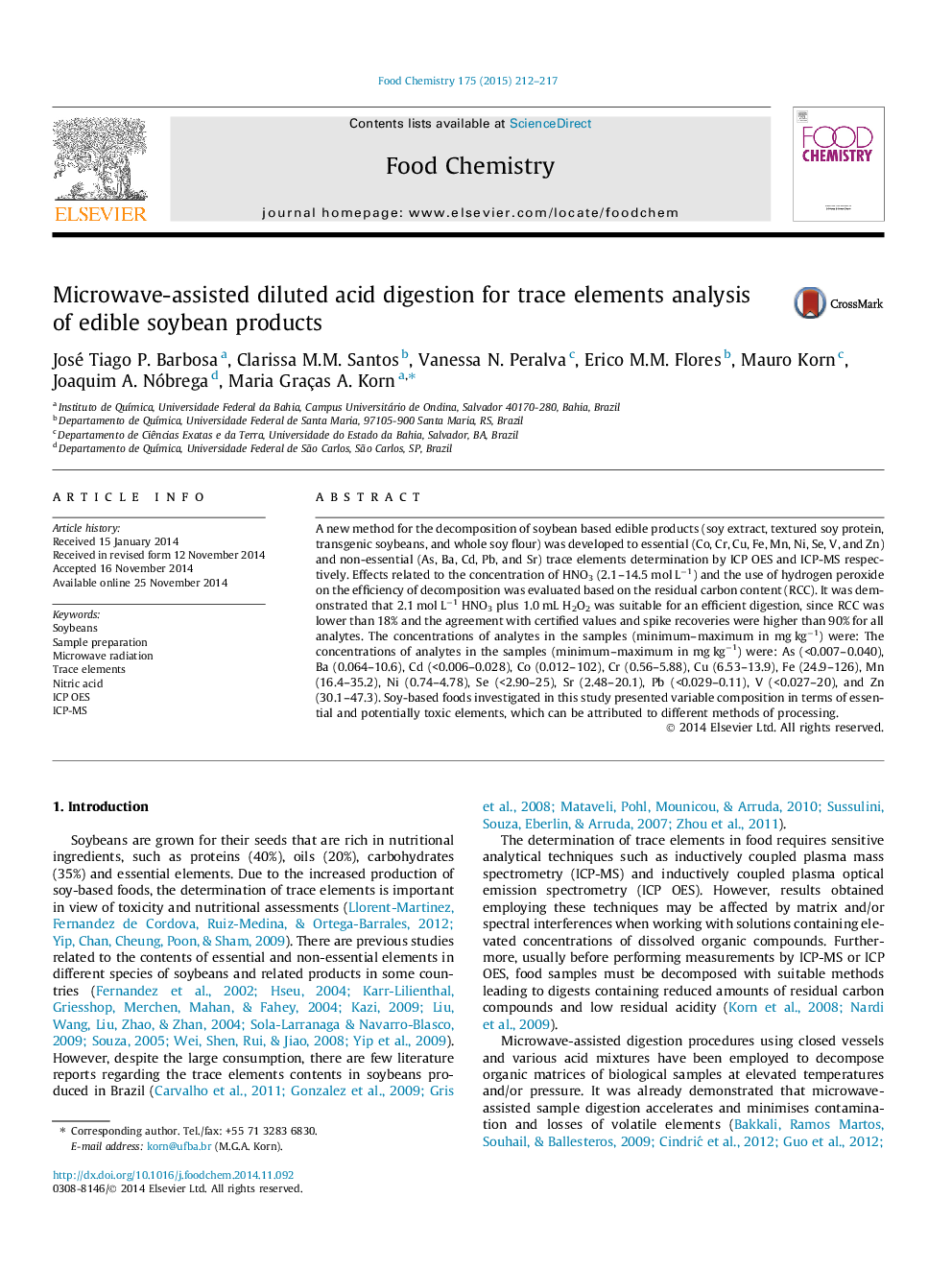| Article ID | Journal | Published Year | Pages | File Type |
|---|---|---|---|---|
| 7594185 | Food Chemistry | 2015 | 6 Pages |
Abstract
A new method for the decomposition of soybean based edible products (soy extract, textured soy protein, transgenic soybeans, and whole soy flour) was developed to essential (Co, Cr, Cu, Fe, Mn, Ni, Se, V, and Zn) and non-essential (As, Ba, Cd, Pb, and Sr) trace elements determination by ICP OES and ICP-MS respectively. Effects related to the concentration of HNO3 (2.1-14.5 mol Lâ1) and the use of hydrogen peroxide on the efficiency of decomposition was evaluated based on the residual carbon content (RCC). It was demonstrated that 2.1 mol Lâ1 HNO3 plus 1.0 mL H2O2 was suitable for an efficient digestion, since RCC was lower than 18% and the agreement with certified values and spike recoveries were higher than 90% for all analytes. The concentrations of analytes in the samples (minimum-maximum in mg kgâ1) were: The concentrations of analytes in the samples (minimum-maximum in mg kgâ1) were: As (<0.007-0.040), Ba (0.064-10.6), Cd (<0.006-0.028), Co (0.012-102), Cr (0.56-5.88), Cu (6.53-13.9), Fe (24.9-126), Mn (16.4-35.2), Ni (0.74-4.78), Se (<2.90-25), Sr (2.48-20.1), Pb (<0.029-0.11), V (<0.027-20), and Zn (30.1-47.3). Soy-based foods investigated in this study presented variable composition in terms of essential and potentially toxic elements, which can be attributed to different methods of processing.
Related Topics
Physical Sciences and Engineering
Chemistry
Analytical Chemistry
Authors
José Tiago P. Barbosa, Clarissa M.M. Santos, Vanessa N. Peralva, Erico M.M. Flores, Mauro Korn, Joaquim A. Nóbrega, Maria Graças A. Korn,
